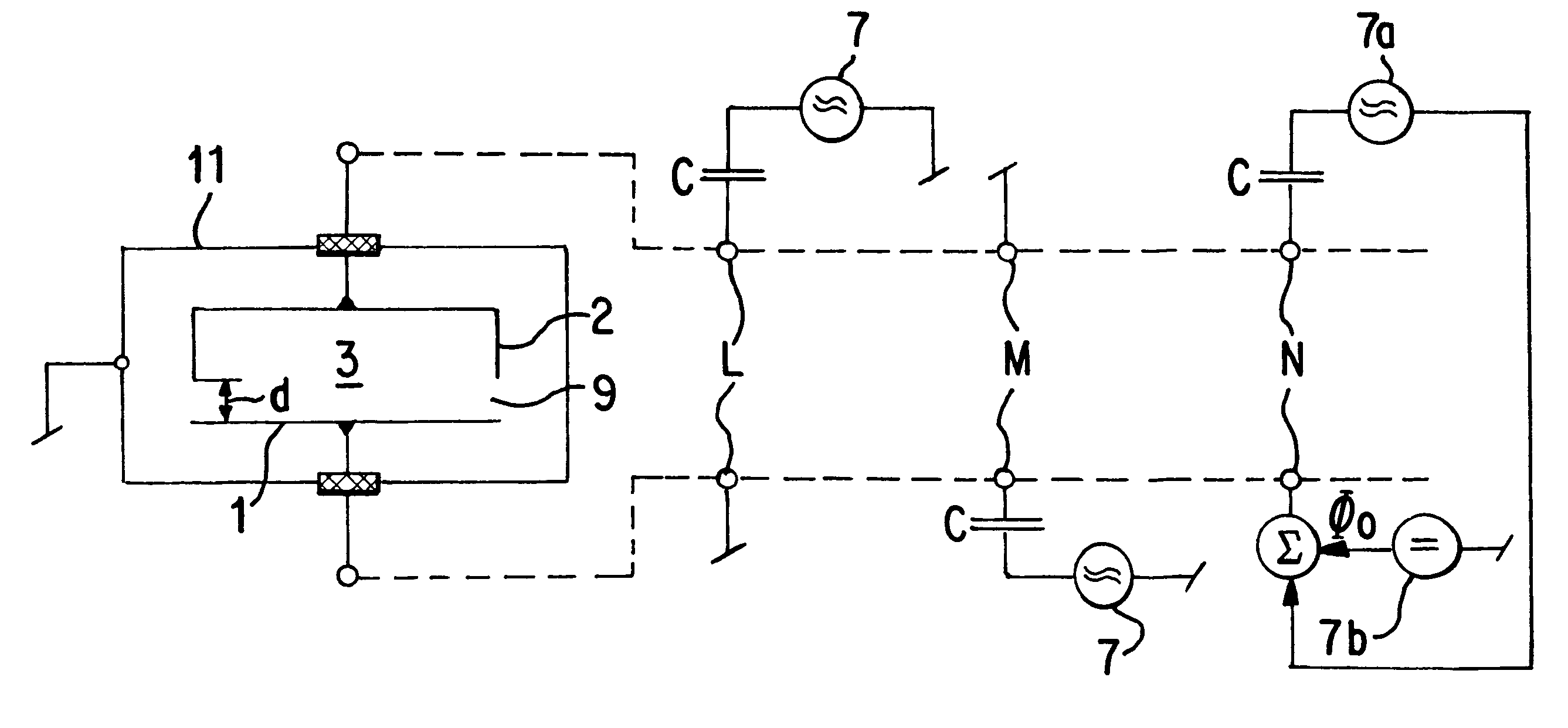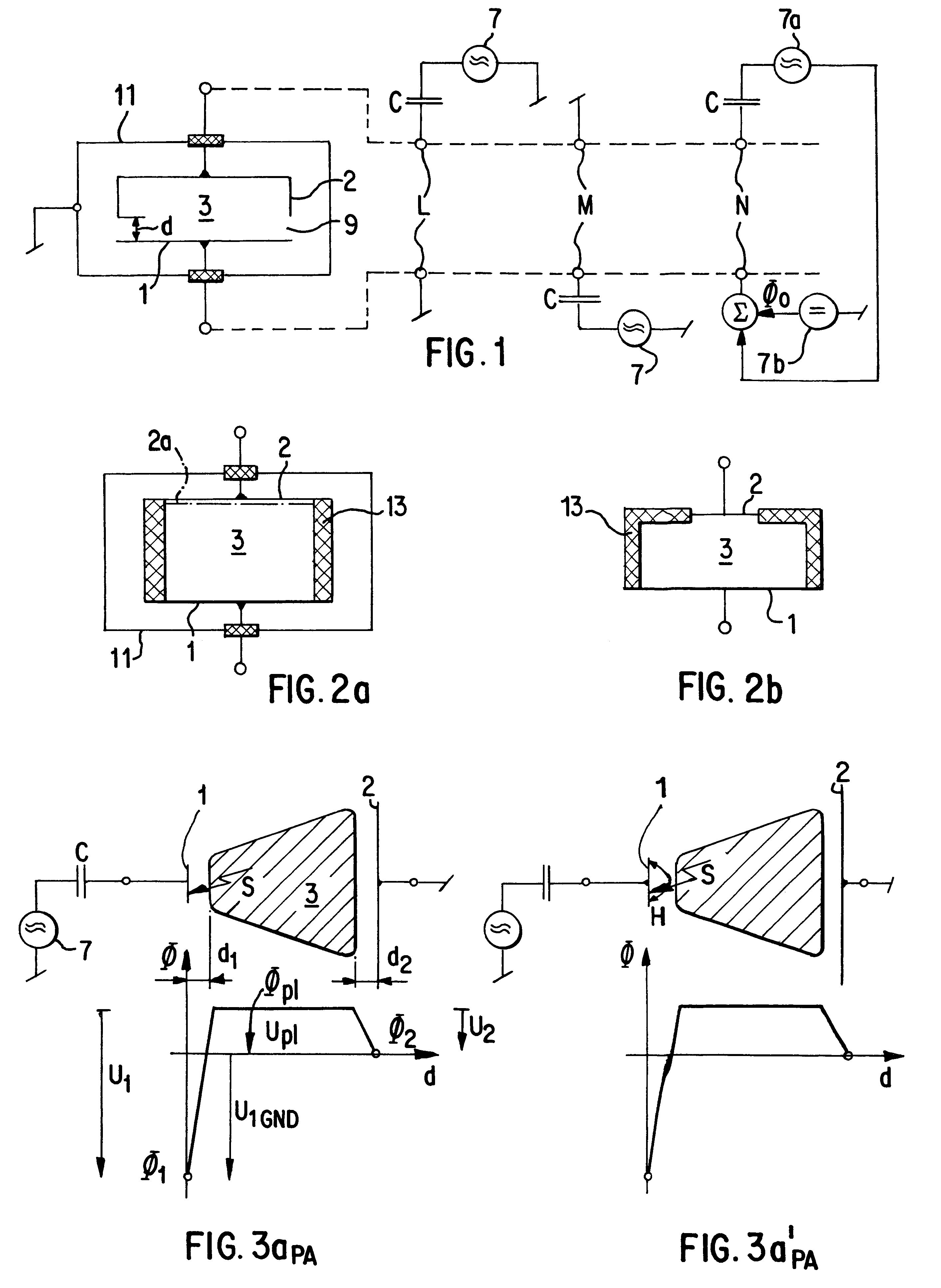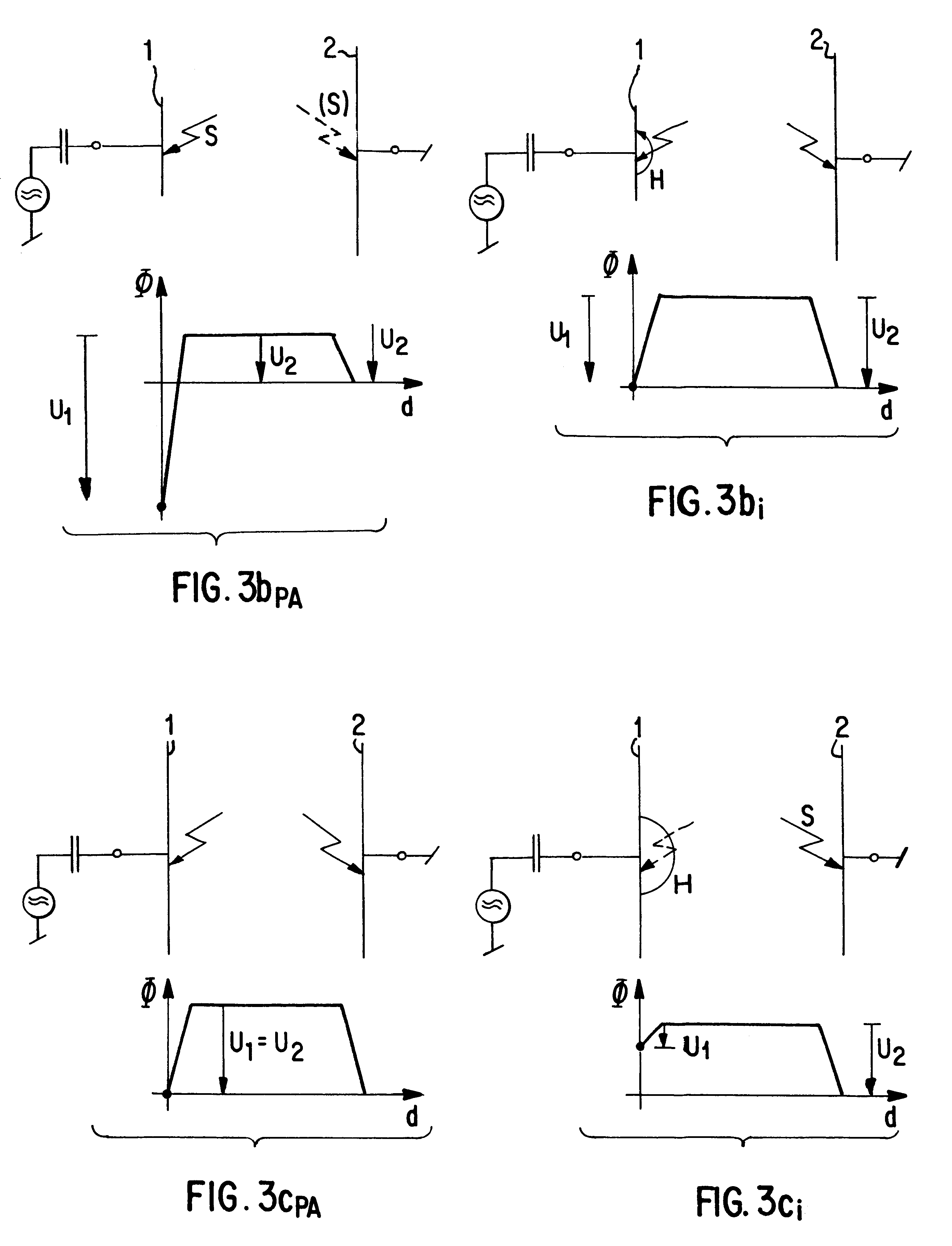Process and apparatus for sputter etching or sputter coating
- Summary
- Abstract
- Description
- Claims
- Application Information
AI Technical Summary
Benefits of technology
Problems solved by technology
Method used
Image
Examples
Embodiment Construction
In FIG. 1 an RF plasma discharge space 3 is confined exclusively by two electrodes 1 and 2. As schematically shown by three alternative connections, L, M, N in one case, the electrode 2 is connected to an RF generator 7 via a DC-decoupling capacitor C, whereas electrode 1 is connected to a reference potential, usually to ground potential. As a second variant M, electrode 2, which is shown as being a hollow electrode, is connected to reference potential, normally to ground potential, whereas electrode 1 is connected via a DC-decoupling capacitor C to RF generator 7. As a third and fourth variant (latter not shown), either electrode 1 or 2 is again connected via decoupling capacitor C to an RF generator 7a which itself is not referred to reference potential as RF generator 7, but which is connected to the other electrode 2 or 3. One of the electrodes as shown, e.g. electrode 1, which is not decoupled from DC potential by capacitor C, is set to a reference DC potential .0..sub.o, as e....
PUM
| Property | Measurement | Unit |
|---|---|---|
| Length | aaaaa | aaaaa |
| Length | aaaaa | aaaaa |
| Length | aaaaa | aaaaa |
Abstract
Description
Claims
Application Information
 Login to View More
Login to View More - R&D
- Intellectual Property
- Life Sciences
- Materials
- Tech Scout
- Unparalleled Data Quality
- Higher Quality Content
- 60% Fewer Hallucinations
Browse by: Latest US Patents, China's latest patents, Technical Efficacy Thesaurus, Application Domain, Technology Topic, Popular Technical Reports.
© 2025 PatSnap. All rights reserved.Legal|Privacy policy|Modern Slavery Act Transparency Statement|Sitemap|About US| Contact US: help@patsnap.com



